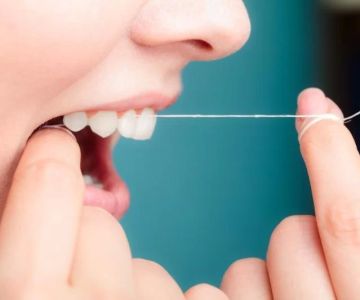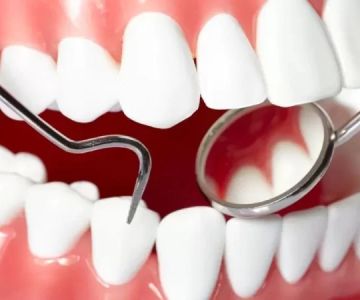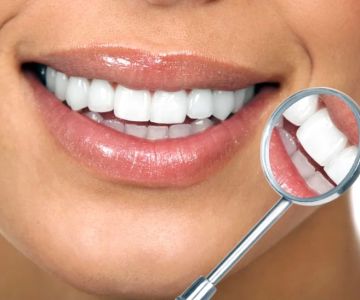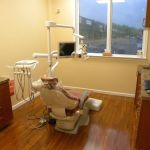
Understanding oral hygiene beyond brushing your teeth
When Olivia, a 29-year-old nurse in California, asked her dentist what “oral hygiene” truly means, she was surprised by the answer. She thought it was simply brushing her teeth twice a day—but her dentist explained that oral hygiene goes far deeper. It’s about maintaining the health of your entire mouth—teeth, gums, tongue, and soft tissues—to prevent disease and improve overall wellbeing. For Americans juggling busy lives, understanding oral hygiene is essential not only for a bright smile but also for long-term health.
According to the American Dental Association (ADA), oral hygiene involves daily practices that remove plaque and bacteria to prevent tooth decay, gum disease, and bad breath. ([ada.org](https://www.ada.org/resources/ada-library/oral-health-topics/home-care?utm_source=chatgpt.com)) Good oral hygiene means more than fresh breath—it’s the foundation of your body’s health system.
1. What oral hygiene really means
1.1 The definition of oral hygiene
Oral hygiene is the practice of keeping the mouth clean and disease-free through consistent habits such as brushing, flossing, and routine dental care. It’s both a preventive and a proactive measure. The goal is to maintain oral tissues in good condition, prevent tooth loss, and avoid bacterial infections that can spread to other parts of the body. ([nidcr.nih.gov](https://www.nidcr.nih.gov/health-info/oral-hygiene?utm_source=chatgpt.com))
1.2 The science behind it
The mouth contains billions of bacteria—some helpful, others harmful. Without regular cleaning, harmful bacteria form sticky plaque that hardens into tartar. This causes gum inflammation (gingivitis), tooth decay, and even systemic infections. Oral hygiene interrupts that bacterial growth cycle. When you brush and floss effectively, you protect not only your teeth but also your heart, lungs, and other organs. ([health.harvard.edu](https://www.health.harvard.edu/heart-health/gum-disease-and-heart-disease-the-common-thread?utm_source=chatgpt.com))
1.3 Why oral hygiene is vital in the U.S. today
In the U.S., poor oral health is one of the most common chronic health conditions. Millions of adults live with untreated cavities or gum disease due to lack of access, busy schedules, or misinformation. The CDC reports that nearly 50% of American adults over 30 have gum disease. ([cdc.gov](https://www.cdc.gov/oral-health/fast-facts/index.html?utm_source=chatgpt.com)) Prioritizing oral hygiene helps prevent not only dental problems but also expensive medical treatments later in life.
2. What happens when oral hygiene is neglected
2.1 The domino effect of poor oral care
When you skip brushing or flossing, plaque builds up, leading to cavities and gum disease. These infections don’t stay confined to your mouth—they can travel through the bloodstream, affecting the heart, lungs, and even the brain. Harvard researchers link gum disease with heart attacks, stroke, and diabetes complications. ([health.harvard.edu](https://www.health.harvard.edu/heart-health/gum-disease-and-heart-disease-the-common-thread?utm_source=chatgpt.com))
Olivia’s experience was a reminder of this connection. After months of ignoring bleeding gums, she noticed fatigue and bad breath. Her dentist explained she had early gum disease—something that could worsen if left untreated. Once she improved her oral hygiene, her energy levels and confidence improved dramatically.
2.2 Common diseases linked to poor oral hygiene
- Gingivitis and periodontitis: Gum inflammation that can progress to bone loss around teeth.
- Tooth decay (cavities): Acidic breakdown of enamel from bacterial activity.
- Halitosis (bad breath): A result of bacteria buildup on the tongue and gums.
- Systemic inflammation: Oral infections contribute to chronic inflammatory diseases like diabetes, arthritis, and cardiovascular disease.
3. The benefits of good oral hygiene for Americans
3.1 A healthier mouth, a stronger body
Practicing good oral hygiene reduces the risk of gum disease and tooth loss while supporting overall immune health. Studies show that people who maintain consistent oral hygiene experience fewer infections and lower inflammation throughout the body. This means fewer doctor visits, better digestion, and improved overall wellness.
3.2 Economic and emotional benefits
Dental neglect in the U.S. leads to billions in preventable healthcare costs annually. Maintaining good oral hygiene prevents costly restorative procedures like root canals or implants. Additionally, clean teeth and fresh breath boost self-esteem—helping in job interviews, relationships, and social interactions.
3.3 Confidence and quality of life
People with healthy smiles tend to feel more confident in public and professional settings. Studies by the American Academy of Cosmetic Dentistry found that 73% of Americans believe an attractive smile increases confidence and success in life. A good oral hygiene routine is, therefore, an investment in self-presentation and happiness.
4. The essential components of oral hygiene
4.1 Daily habits for a clean mouth
- Brush twice daily: Use fluoride toothpaste and a soft-bristle brush. Spend at least two minutes covering all surfaces.
- Floss once a day: Clean between teeth to remove plaque brushing can’t reach.
- Clean your tongue: Use a scraper or brush to reduce bacteria and improve breath.
- Rinse wisely: An antibacterial or fluoride mouthwash adds an extra layer of protection.
- Replace your toothbrush: Every three months, or sooner if the bristles fray.
4.2 Nutrition and lifestyle choices
Your diet plays a major role in oral hygiene. Sugary drinks, processed foods, and acidic beverages weaken enamel and feed bacteria. Instead, choose a diet rich in fiber, calcium, and vitamin D. Smoking and alcohol consumption also harm oral tissues and reduce the body’s healing ability. Avoiding these habits supports both dental and overall health.
4.3 Regular dental visits
Even the best home care can’t replace professional dental cleanings. Dentists remove tartar buildup, detect early problems, and provide personalized advice. The ADA recommends visiting your dentist at least twice a year for check-ups. ([ada.org](https://www.ada.org/resources/ada-library/oral-health-topics/home-care?utm_source=chatgpt.com))
5. How oral hygiene connects to whole-body health
Oral hygiene plays a critical role in systemic health. The mouth is a gateway to the digestive and respiratory systems. When bacteria from the mouth enter the bloodstream, they can trigger or worsen diseases in other organs. Research continues to show that maintaining oral hygiene reduces risks for pneumonia, heart disease, and diabetes-related complications. ([pmc.ncbi.nlm.nih.gov](https://pmc.ncbi.nlm.nih.gov/articles/PMC11169959/?utm_source=chatgpt.com))
Olivia’s doctor even noticed her blood pressure improved after she committed to better oral care. This demonstrates how small daily habits in oral hygiene can lead to measurable health improvements across the body.
6. A practical oral hygiene routine for U.S. adults
Here’s a simple daily structure that works for most Americans:
- Morning: Brush and rinse before breakfast to remove overnight bacteria.
- After meals: Rinse your mouth with water or chew sugar-free gum to neutralize acids.
- Evening: Brush, floss, and rinse before bed to prevent bacterial growth overnight.
- Weekly: Inspect your mouth for signs of bleeding gums or discoloration, and clean your toothbrush holder.
This routine, combined with professional care, can drastically reduce the risk of cavities, gum disease, and oral infections common among U.S. adults.
7. Taking control of your oral health
Oral hygiene isn’t just a daily task—it’s a lifelong commitment to health, confidence, and vitality. For U.S. adults, prioritizing oral hygiene can prevent major diseases, reduce healthcare costs, and enhance quality of life. Whether you’re managing dental sensitivity, gum bleeding, or simply want a brighter smile, proper oral care is the first step.
To learn more about personalized dental routines and find professional care in your area, visit Family Dentistry Online—a trusted source for expert dental insights and service recommendations tailored to your needs.







 Da Vinci Dental Specialists4.0 (312 review)
Da Vinci Dental Specialists4.0 (312 review) Amazing Family Dental5.0 (304 review)
Amazing Family Dental5.0 (304 review) Kevin Walker DDS and Mae Lee Springer DDS5.0 (125 review)
Kevin Walker DDS and Mae Lee Springer DDS5.0 (125 review) La Petite Dent Pediatric Dentistry and Orthodontics4.0 (386 review)
La Petite Dent Pediatric Dentistry and Orthodontics4.0 (386 review) Affiliated Dental Specialists4.0 (48 review)
Affiliated Dental Specialists4.0 (48 review) Dr. Jennifer L. Hoffer, DDS5.0 (2 review)
Dr. Jennifer L. Hoffer, DDS5.0 (2 review) The Importance of Oral Health Education During Pregnancy for a Healthy Pregnancy
The Importance of Oral Health Education During Pregnancy for a Healthy Pregnancy Best Tips for Brushing Your Teeth Properly for Healthy Gums: Essential Techniques for Oral Health
Best Tips for Brushing Your Teeth Properly for Healthy Gums: Essential Techniques for Oral Health Why Skipping Dental Checkups Can Lead to Bigger Oral Health Problems
Why Skipping Dental Checkups Can Lead to Bigger Oral Health Problems Advantages of Porcelain Dental Restorations
Advantages of Porcelain Dental Restorations How Can Diabetes Cause Tooth and Gum Problems? Preventing and Managing Oral Health Issues
How Can Diabetes Cause Tooth and Gum Problems? Preventing and Managing Oral Health Issues Healthy Habits for Promoting Good Oral Health and Hygiene: Tips for a Healthy Smile
Healthy Habits for Promoting Good Oral Health and Hygiene: Tips for a Healthy Smile